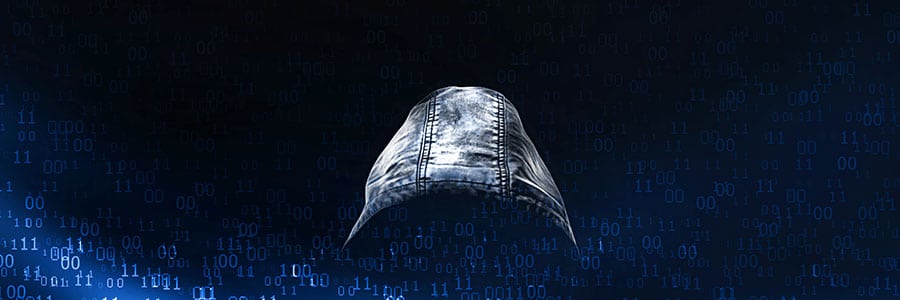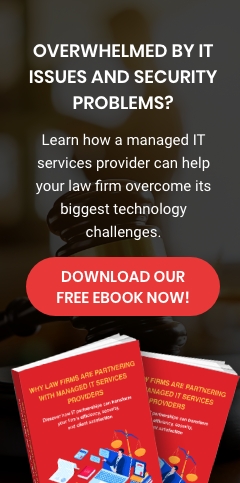Cybercrime is a lucrative business, and this is why cybercriminals continue to devise new techniques to trick individuals and businesses into handing other money or confidential information, which they can then exploit or sell on the dark web.
One of the most common techniques that cybercriminals use is malware. Short for malicious software, these programs are intended to cause harm, disclose information, or violate the security or stability of a system. According to the 2019 Verizon Data Breach Investigations Report (DBIR), 28% of data breaches involved malware.
To protect your business, however, you must understand the differences between the many types of malware. Let’s take a look at some of them:
#1. Viruses
As the name implies, viruses are named after their biological counterparts because of their ability to self-replicate and spread to other computers on your network. They are typically attached to documents and executables, and are activated once a user runs the infected file. Viruses range in severity, from being mildly disruptive to being able to shut down an entire organization’s operations and steal confidential data.
#2. Worms
Similar to viruses, worms spread across networks by exploiting vulnerabilities in the operating system (OS) or firmware. Some variants can overload web servers or hog bandwidth traffic, or be used to steal information. The main difference between worms and viruses is that the latter don't infect existing programs, replicating by themselves instead.
A notable example of a computer worm affecting businesses is the ILOVEYOU worm. In May 2000, the worm impacted millions worldwide by sending an infected email purporting to be a confession of affection. Those who opened the message and its attachment infected the files in their computer and also sent the worm to all contacts in their email address books. The worm cost banks, government agencies, and other organizations billions in damages.
#3. Ransomware
Ransomware is one of the most infamous pieces of malware today, mainly due to the WannaCry and NotPetya attacks back in 2017. This malware causes serious damage to companies worldwide by encrypting entire computers and networks, making the data inside them inaccessible to owners. Victims are then asked to pay a ransom, usually in cryptocurrency or prepaid money cards, in exchange for the release of their files.
Regaining access to the data after payment isn’t guaranteed, however. There have been many cases where cybercriminals still refused to decrypt a user’s data even after complying with the ransom demand. Businesses lose revenue and spend more on recovery as a result, bringing the expected total financial damages worldwide due to ransomware to $11.5 billion in 2019.
#4. Trojans
A Trojan is a malicious program that disguises itself as a legitimate application. It is made up of two parts: a client and a server. The former is the component that resides on a host machine, while the latter is based on the hacker’s machine, and is the one that grants them access to the victim’s system. Trojan horses are usually made to monitor user activity or steal confidential files.
Keyloggers are a good example of a Trojan. These monitor and log every keyboard stroke they can identify. If your PC is infected with a keylogger, cybercriminals can record everything you type on your keyboard. This enables them to capture confidential information such as your company secrets and login credentials.
#5. Spyware
These are malicious applications used to monitor a person’s activity for the sake of advertising. Large companies typically bundle spyware with free app downloads without the user realizing it. For instance, if a user downloads an application that could help them with their tasks, they might unknowingly install an application that will monitor their browsing habits and then serve them with targeted ads. Worse, some spyware can even steal banking details and login credentials.
How to protect against malware
The most important step in protecting your business from malware is raising awareness of the serious threat that they pose to your business. To mitigate the chances of malicious software from attacking your IT infrastructure, follow these handy tips:
#1. Install antivirus and anti-malware software
It’s important to have multiple layers of security to protect your systems, so installing an antivirus program may not be enough. Having other applications such as anti-malware software compensates for another software’s weakness, providing your business with a stronger level of defense against malware attacks.
#2. Regularly update your software
One of the most common ways that hackers gain access to computer systems is through vulnerabilities in software. This is why developers are constantly pushing out updates and security patches. Regularly update all of your programs, security applications, and your operating system (OS). This ensures that hackers cannot attack your company using unpatched software bugs.
#3. Educate your employees
Your employees are the weakest link to your cybersecurity. Most data attacks are the result of employees failing to identify a malware attack and consequently aiding the hackers in their modus operandi, so educating your staff will be your best bet toward better malware protection.
Help them recognize potential malware attacks, such as phishing scams. Run a phishing simulation to see how your employees would react in a real situation. After you gather the results, train those who struggled with the exercise.
#4. Partner with USWired
Our managed IT services offer an all-inclusive solution to proactively manage your network while protecting it from the worst cyberthreats such as malware. We’ll take care of your IT infrastructure 24/7/365, so you don’t have to worry about downtime affecting your operations. USWired assures your peace of mind while ensuring your business's success.
Protect your company from the growing threat of malware attacks with USWired. Our team of professional IT experts will prevent any type of malicious software from infiltrating your system and stealing your data. Contact us today, and say goodbye to your IT worries for good.


